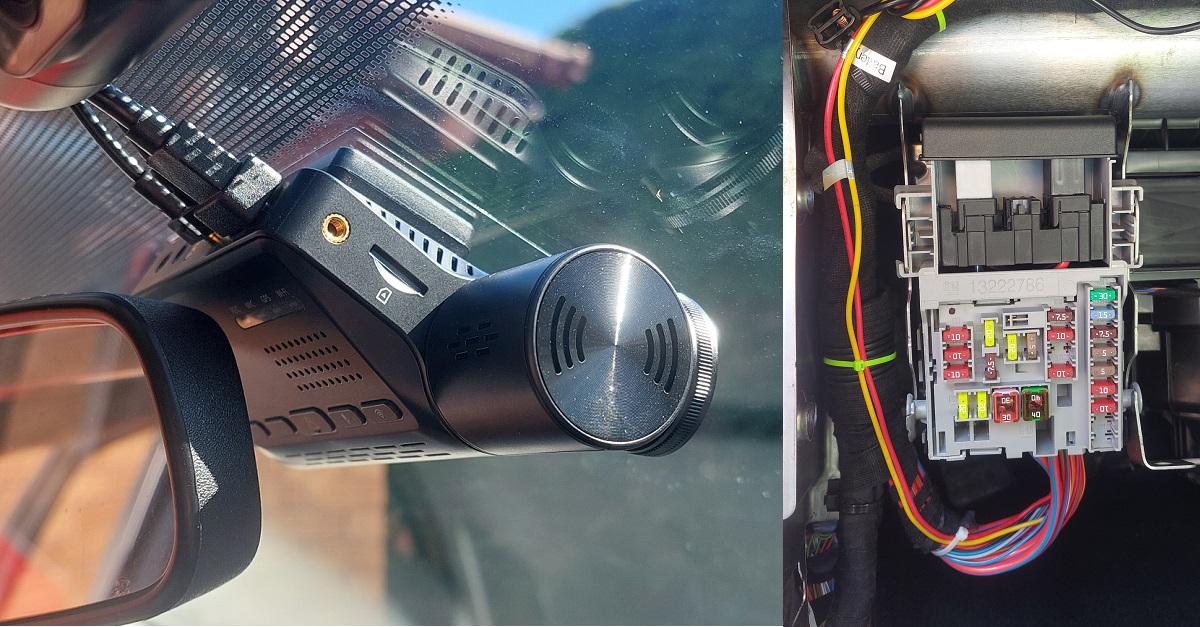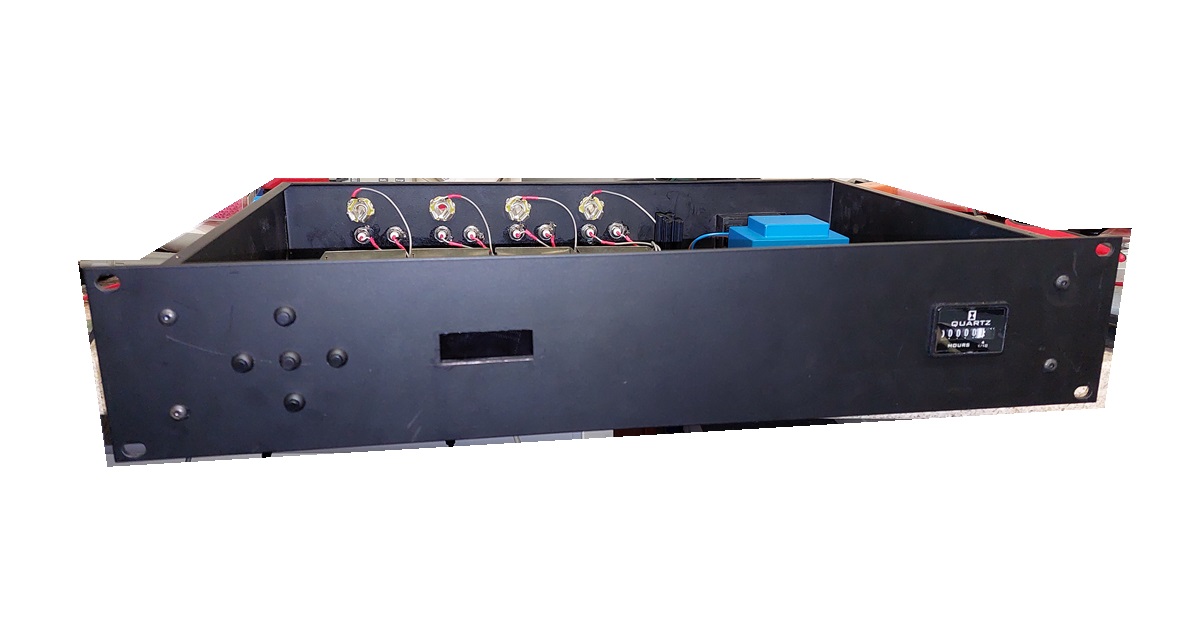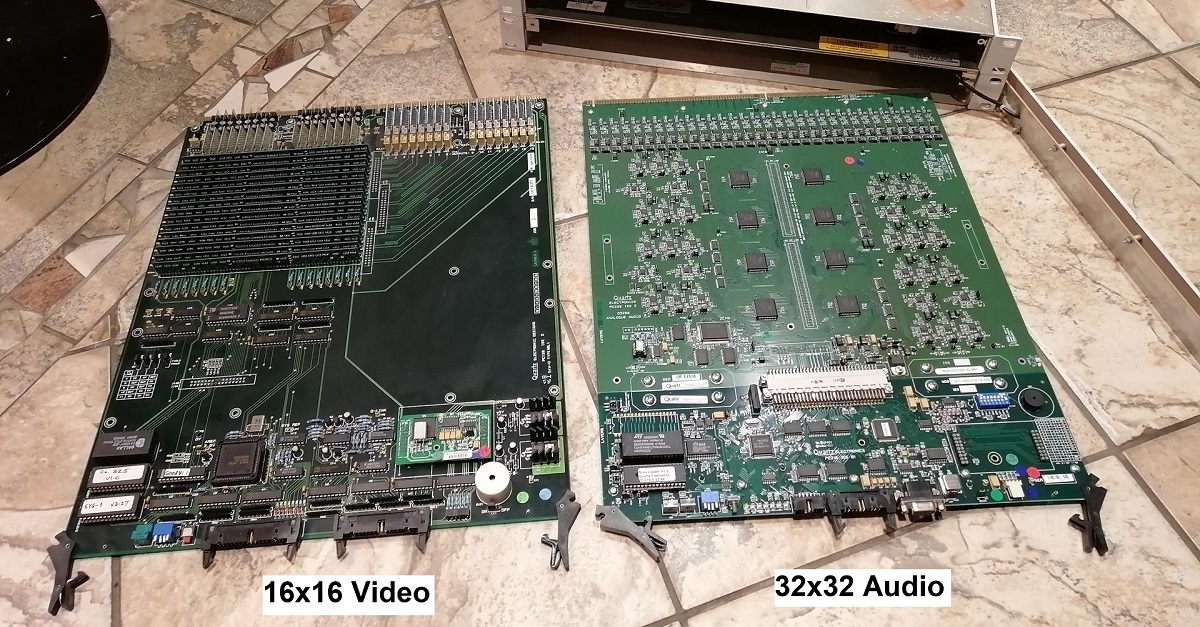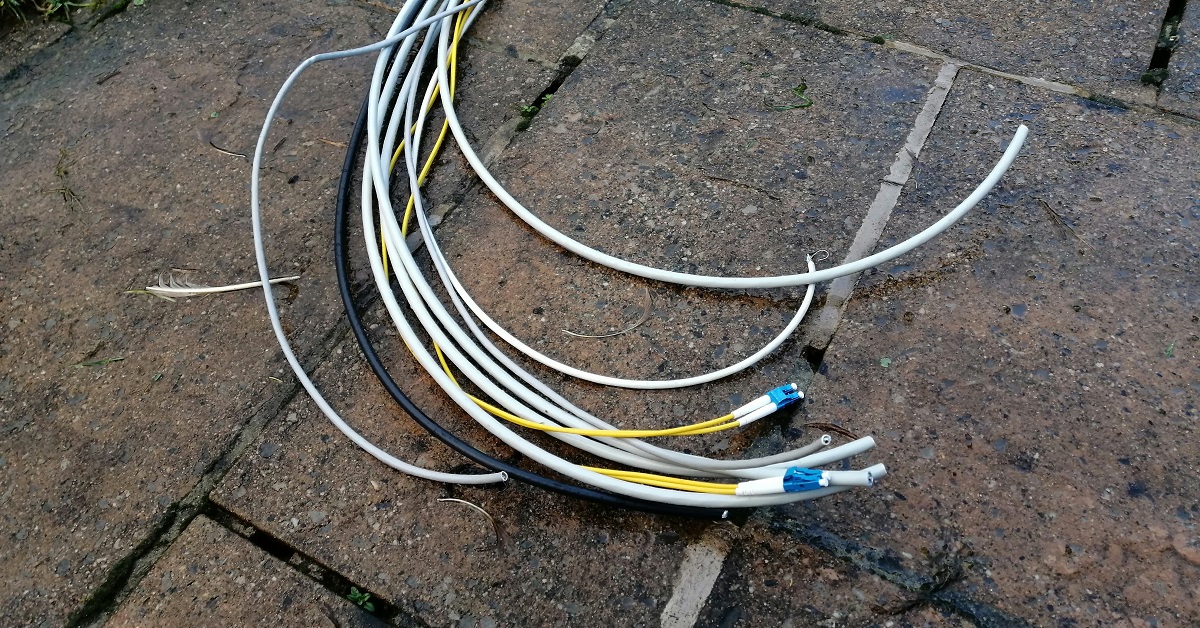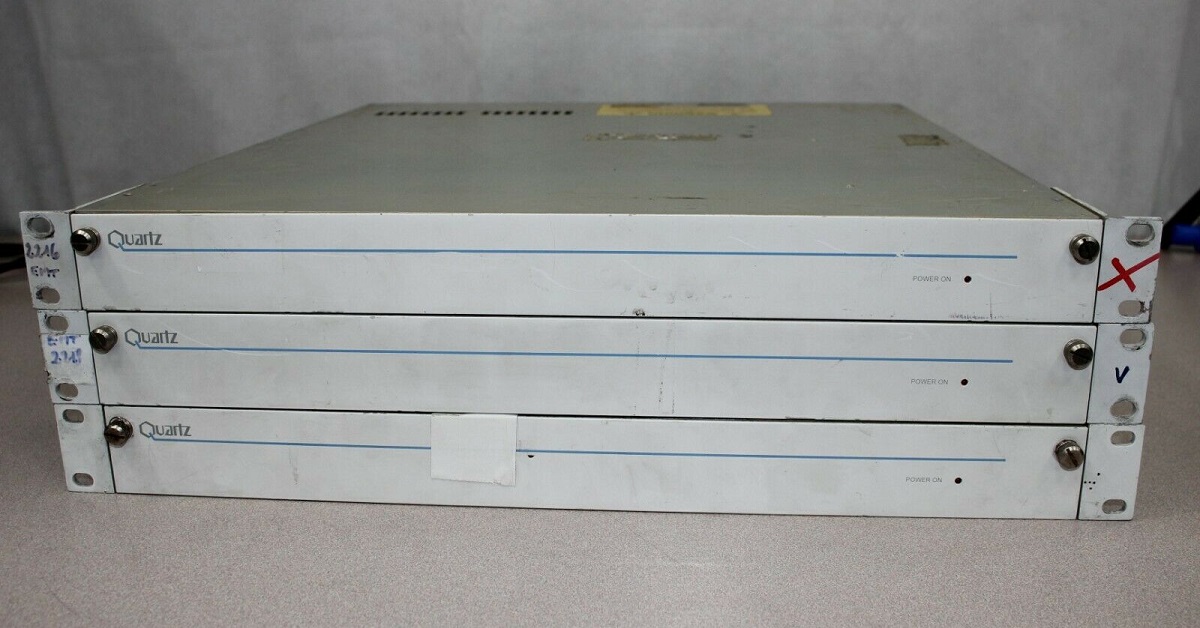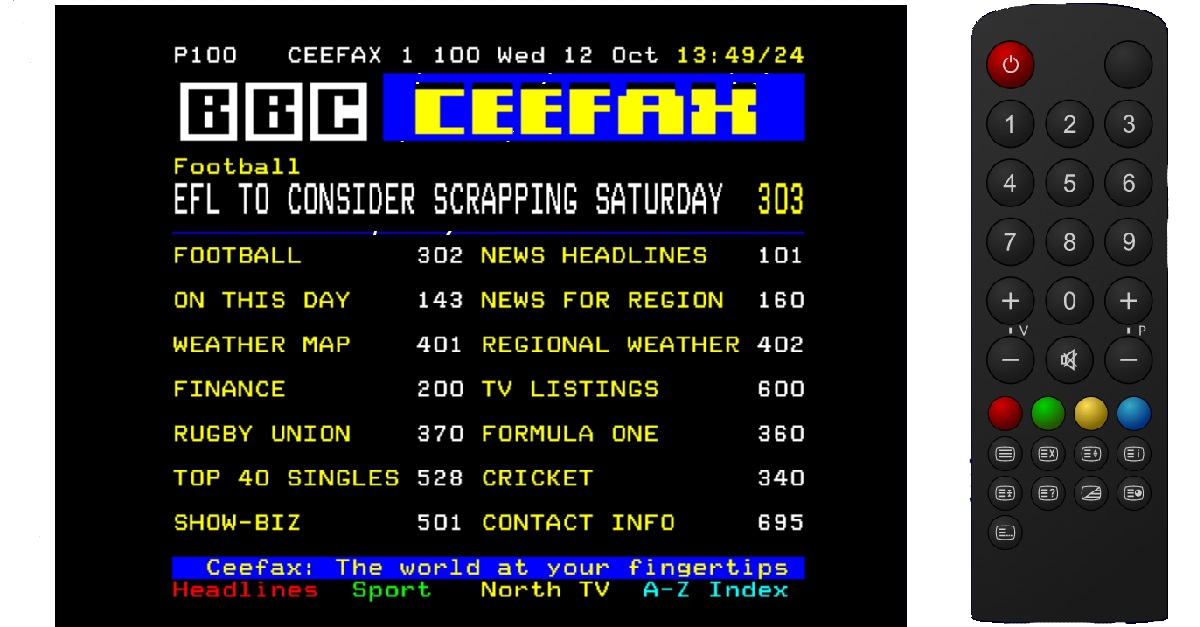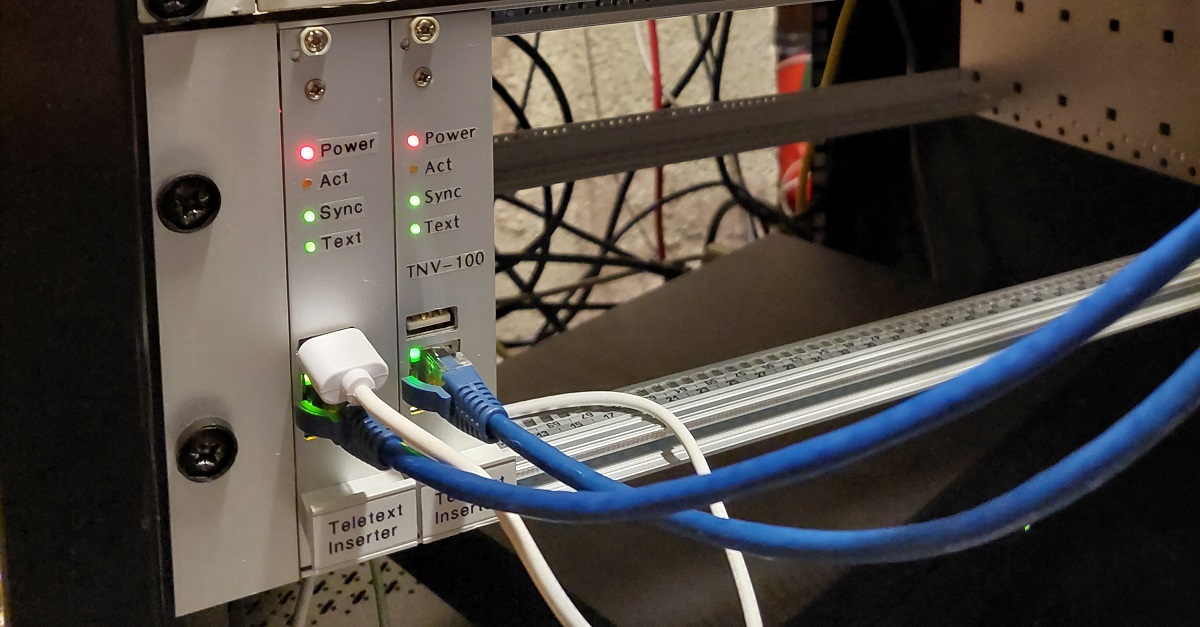Modding a DTP900 for Composite Input
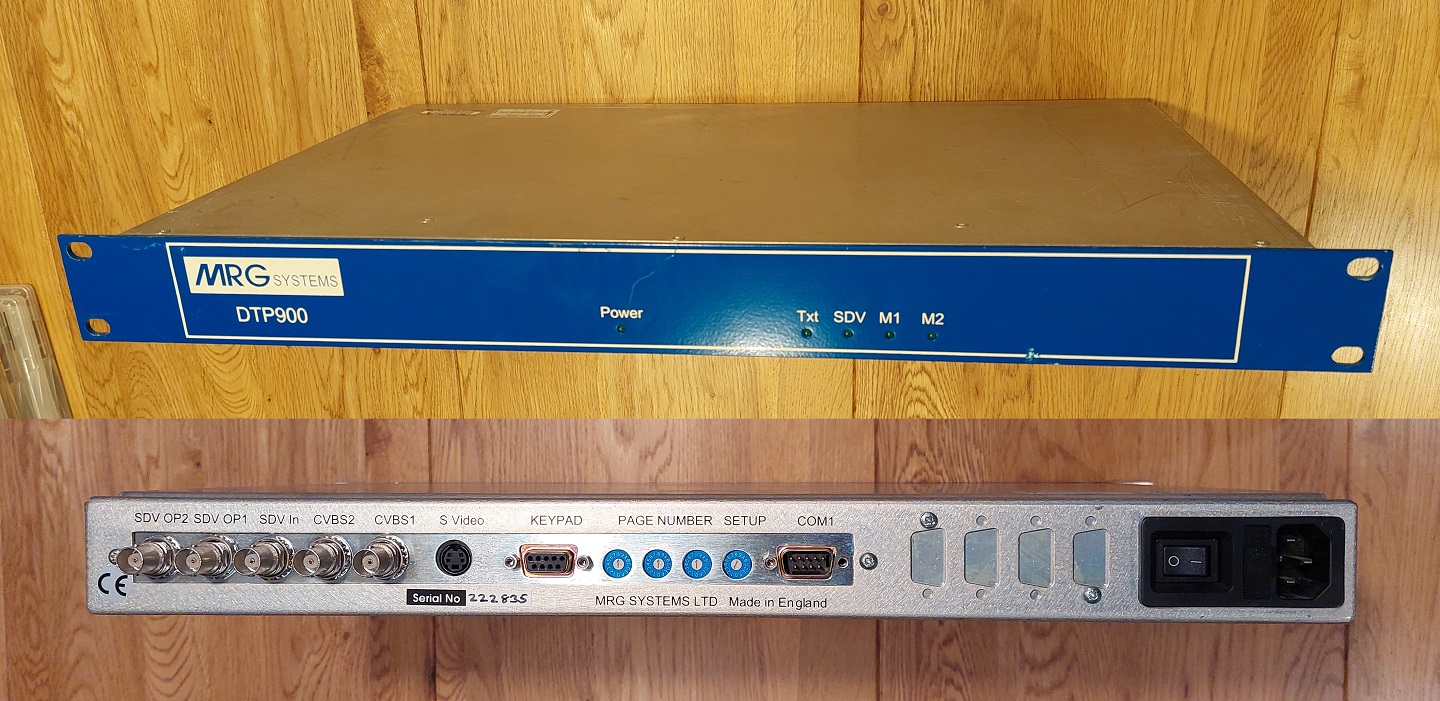
The MRG Systems DTP900 is an In-Vision teletext decoder, designed in 1998 specially to allow television presentation suites to monitor their subtitle output [1] You can actually see three very similar units in this wonderful Google Streetview of BBC Television Centre's Central Communications Area - although those are DTP910s which are slightly different. [1a] Luckily Google have blurred the logos and part numbers so we don't know who they are. .
Indeed, the three I have came originally from BBC Wales [2] These decoders were very kindly given to me by Carl Attril, after he rescued them from a Facebook listing - and since they were all set to P888 [3] P888 is the standard page for teletext subtitles. this is quite obviously what they were used for.
Now you might be aware that I have already built several teletext decoders, but there's a couple of reasons I want to get these ones running.
The main reason is a matter of heritage - these came from the front line so to speak, and the fact that these are proper pieces of broadcasting equipment makes them very interesting to me.
But they're also slightly more capable than my decoders - these can overlay teletext on top of a normal video signal. Mine don't because that would have required a fair bit of extra circuitry.
So, how do we use these? Plug and play? Haha, nope.

The downside of this equipment being designed for the BBC in the late 90s is it's designed to work with broadcast-quality digital video (Rec 656) carried over SDI (Serial Digital Interface).
Whilst SDI is not a particularly complicated format, it has never saw widespread use outside of broadcast - and as such the equipment that uses it tends to be prohibitively expensive and somewhat uncommon.
For example, taking a quick skim through all the places I normally obtain hardware like this reveals that to convert CVBS to SDI, I'd need to buy a 4U "crate" of converter cards at upwards of £300 [4] I couldn't be bothered to find the actual crate but here's a single card for it at £100 - so that option's out right away!
The only analogue video ports on the unit are outputs, so we can connect up analogue monitors but there's no way to plug in an analogue input.
Fortunately, as it turns out, there's a much better way!
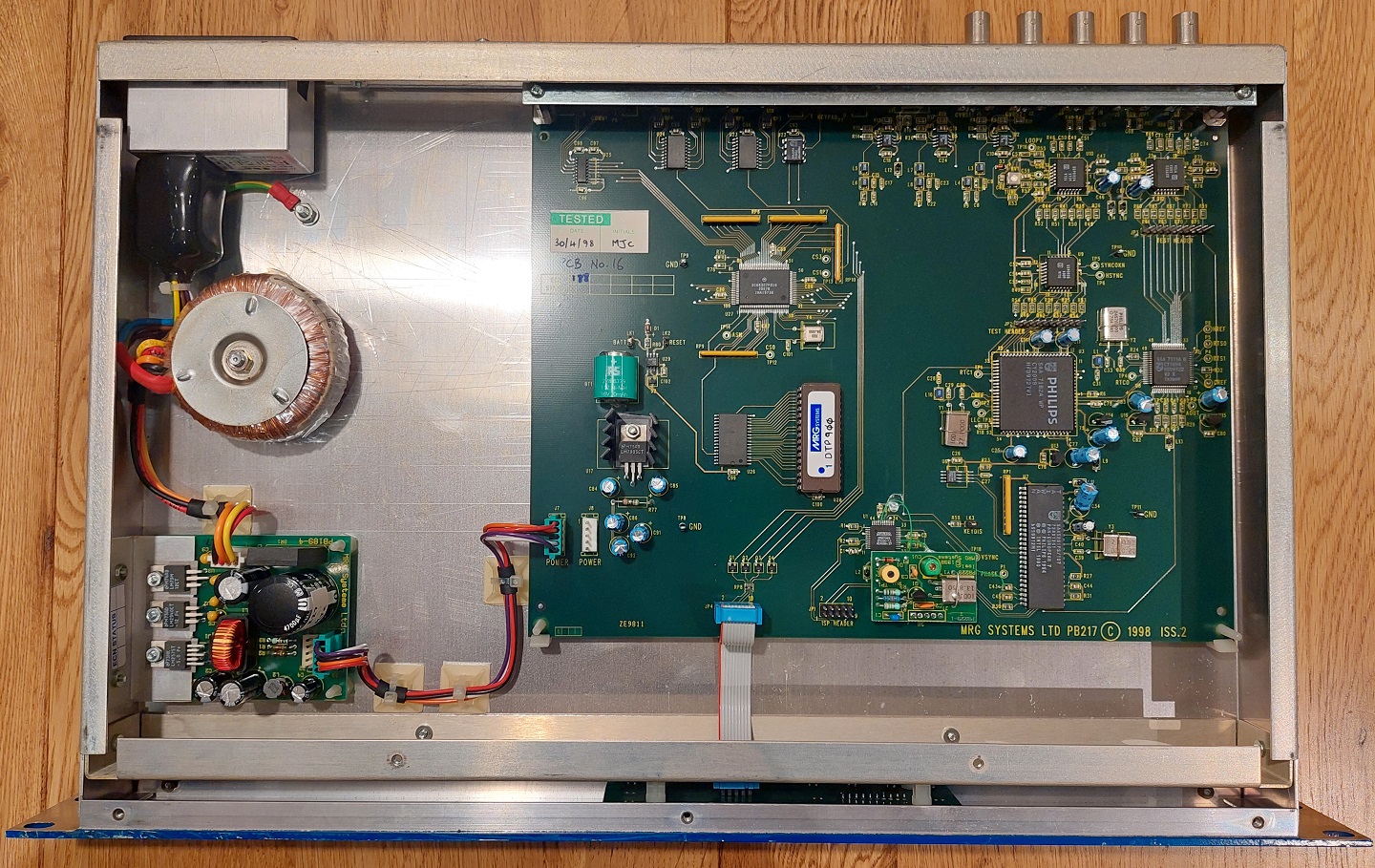
If we take a look inside the DTP900, we can see it's made up of one main PCB, along with a front panel, a power supply, and what appears to be a bodge PCB added later.
The main PCB is divided into two main parts, the video circuitry, and the microprocessor that controls it. We're not going to worry about that part just for the moment, so let's focus on the video circuitry.
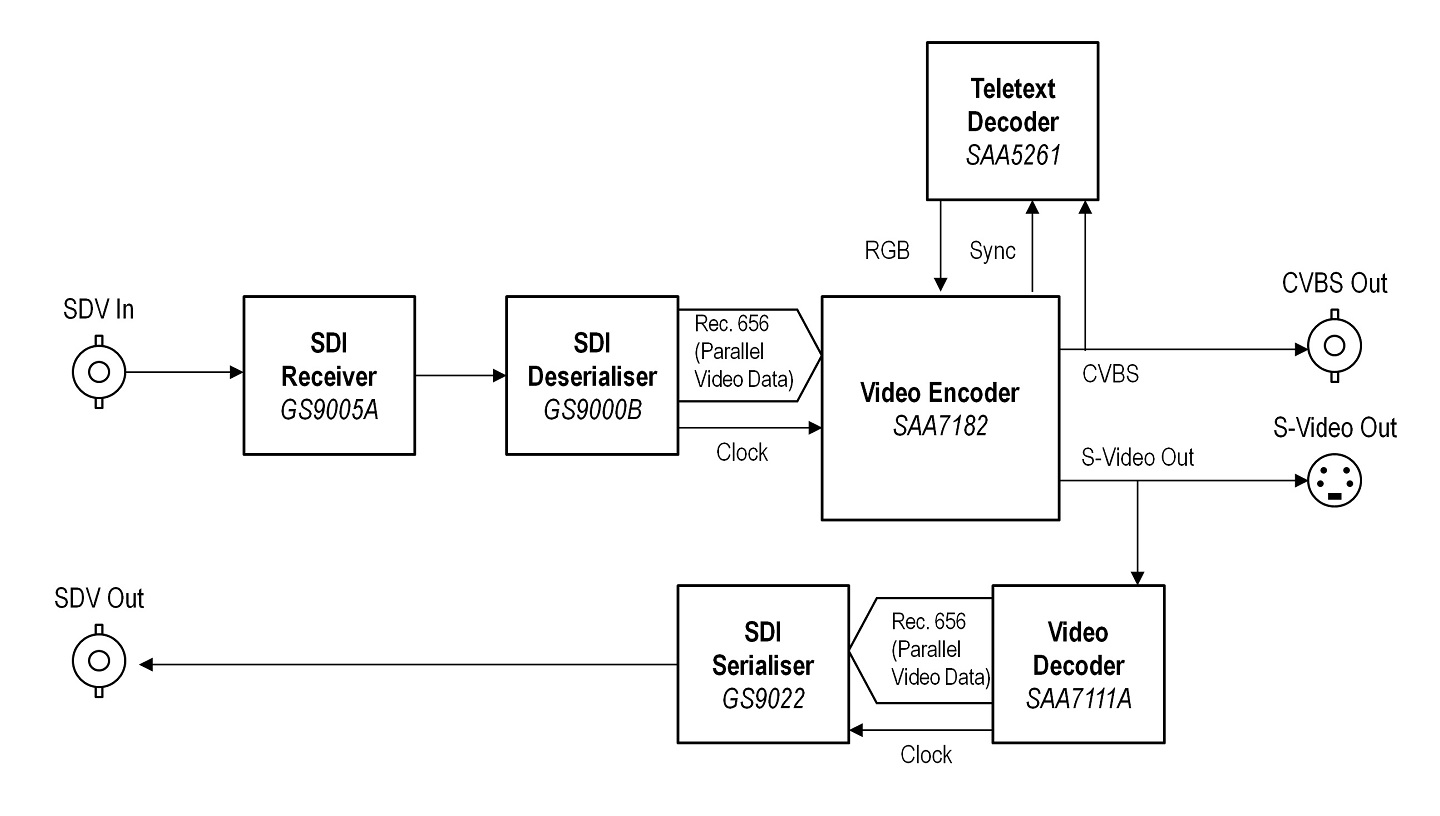
To illustrate this better I've drawn my own diagram - there is a similar one in the MRG manual [5] Fortunately I know Peter Kwan, who worked for MRG Systems - he's passed me on the manuals for this and several other things they made. , but mine is better labelled...
What's surprising about this is that we go to all the trouble of using SDI, digital video - only for this device to convert it down to composite and back internally!
So why does it do this? Well, as you can see it uses the completely standard SAA5261 IC - I have no doubt you would have found this same chip in many TVs at the time.
Problem is - being designed to go inside a TV - this chip expects a composite signal, and outputs an RGB signal - so MRG needed some 'glue' to use it with SDI.
They've been clever and used a chip - the SAA7182 - which can not only take in the SDI signal and convert it to composite video, but also has an RGB overlay feature. This was probably designed to go accomodate the SCART socket on TVs - the functionality is identical.
This composite video is sent off to the telext decoder IC to, well, decode. This means the decoder is actually seeing it's own output back on it's input. Once again MRG have been clever and slave-synced the decoder's output back to the master IC to prevent a sync-loop [6] This is a problem with my decoder - it takes it's input from my internal "TV Chain" - so if you try to send it's output to the same chain, everything goes haywire as it continuously tries to re-sync to itself! .
So, after all that, how can we sneak in our composite signal? Well, this was my initial thought:
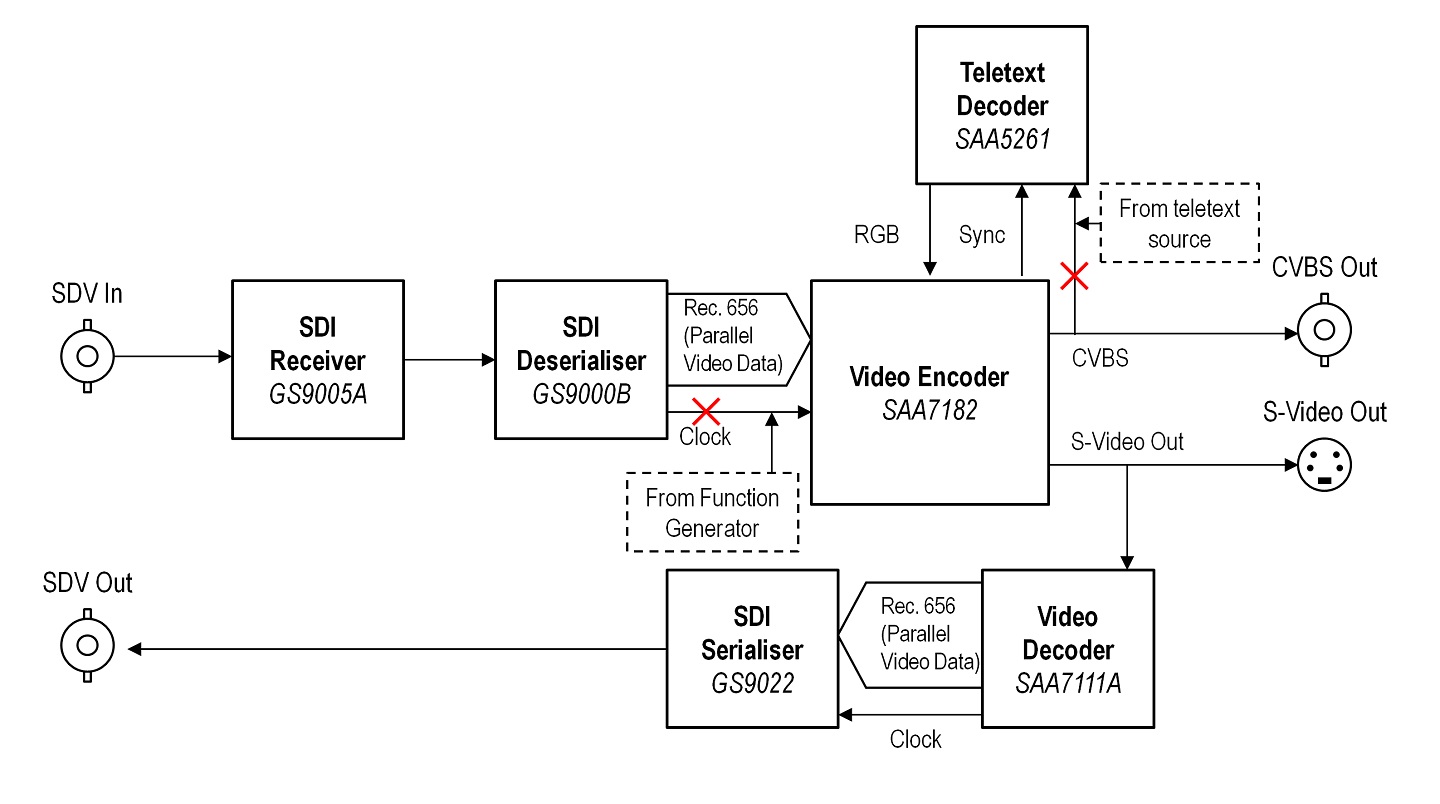
I should add, erm, I did this before fully understanding how this thing works. Which will become obvious shortly.
Anyway, what I've done is sent my teletext-laden video signal directly into the decoder IC, and added a 27MHz clock to keep the rest of the video circuitry happy. This actually worked pretty well:
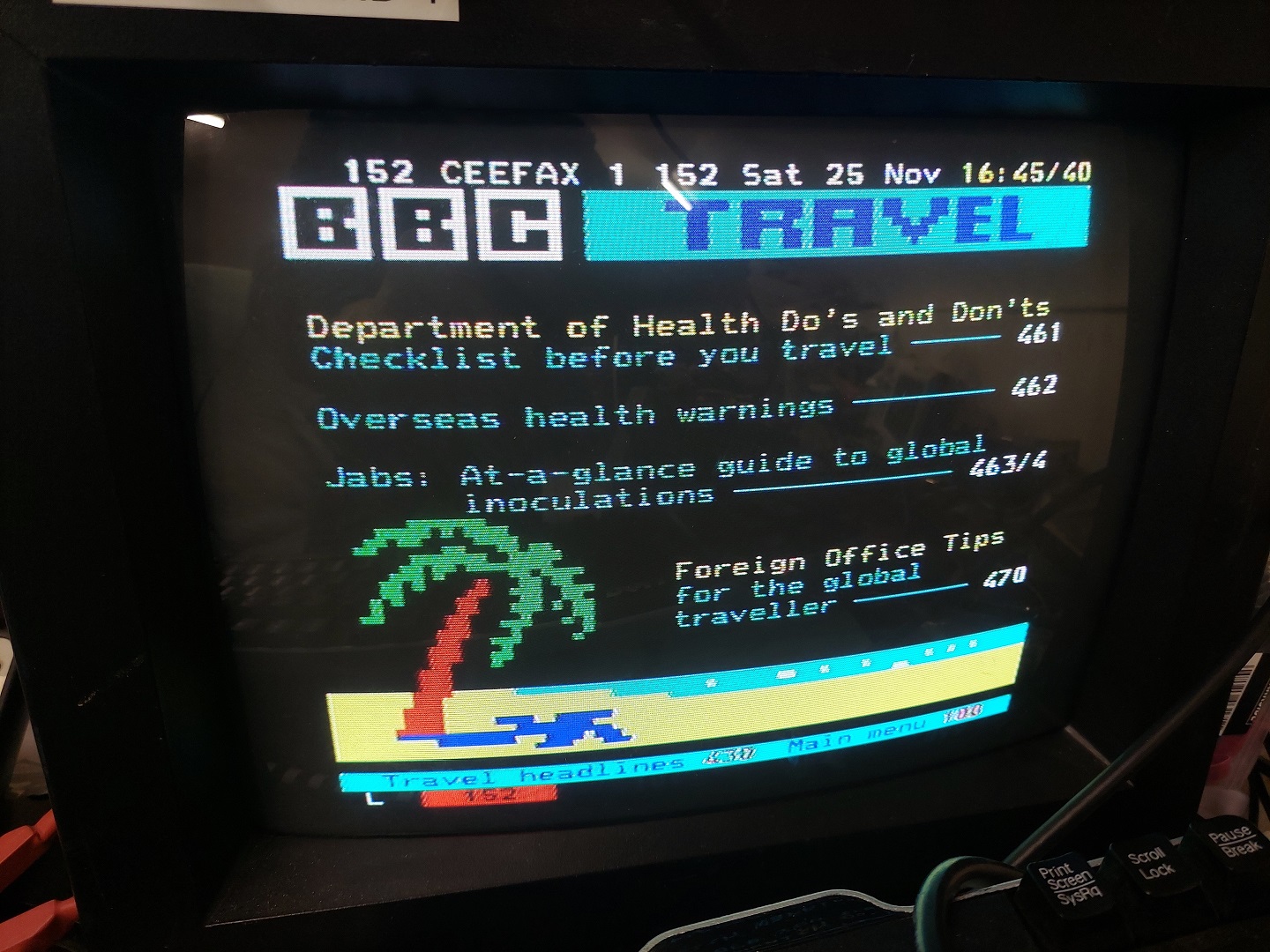
However, the pretty big snag was that obviously since my video signal completely bypassed the video circuitry, it didn't get overlaid - instead we get the SDI 'green screen of death' [7] In Rec. 656 digital video, a row of zeros makes a deep green - so you get a green screen with no input instead of the expected black :
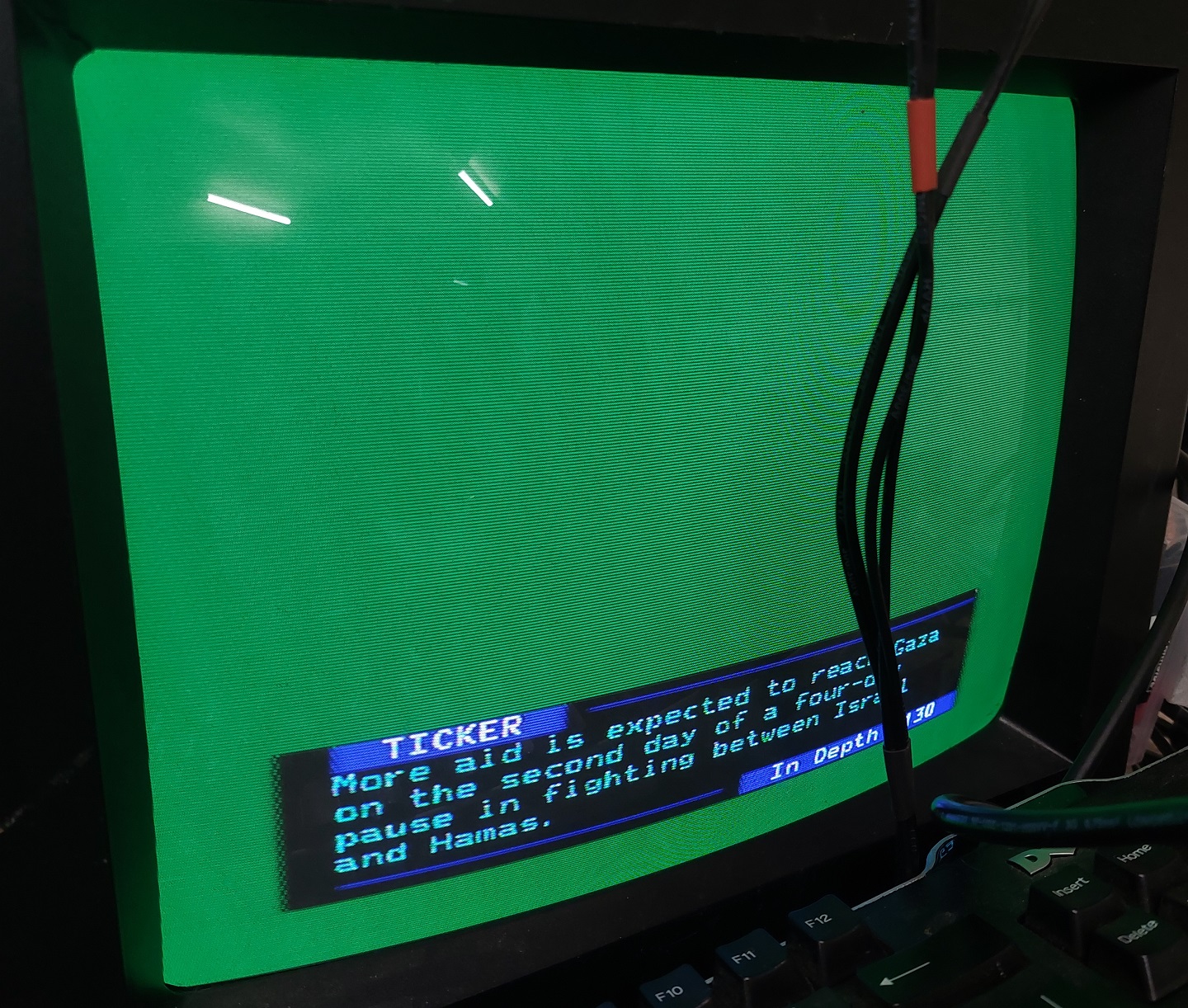
After I initially thought that would require an additional video decoder IC to replace the SDI serialiser, I suddenly realised that the board had an SDI encoder right there - I just needed to get my signal into it instead, and then loop its output back into the unit.
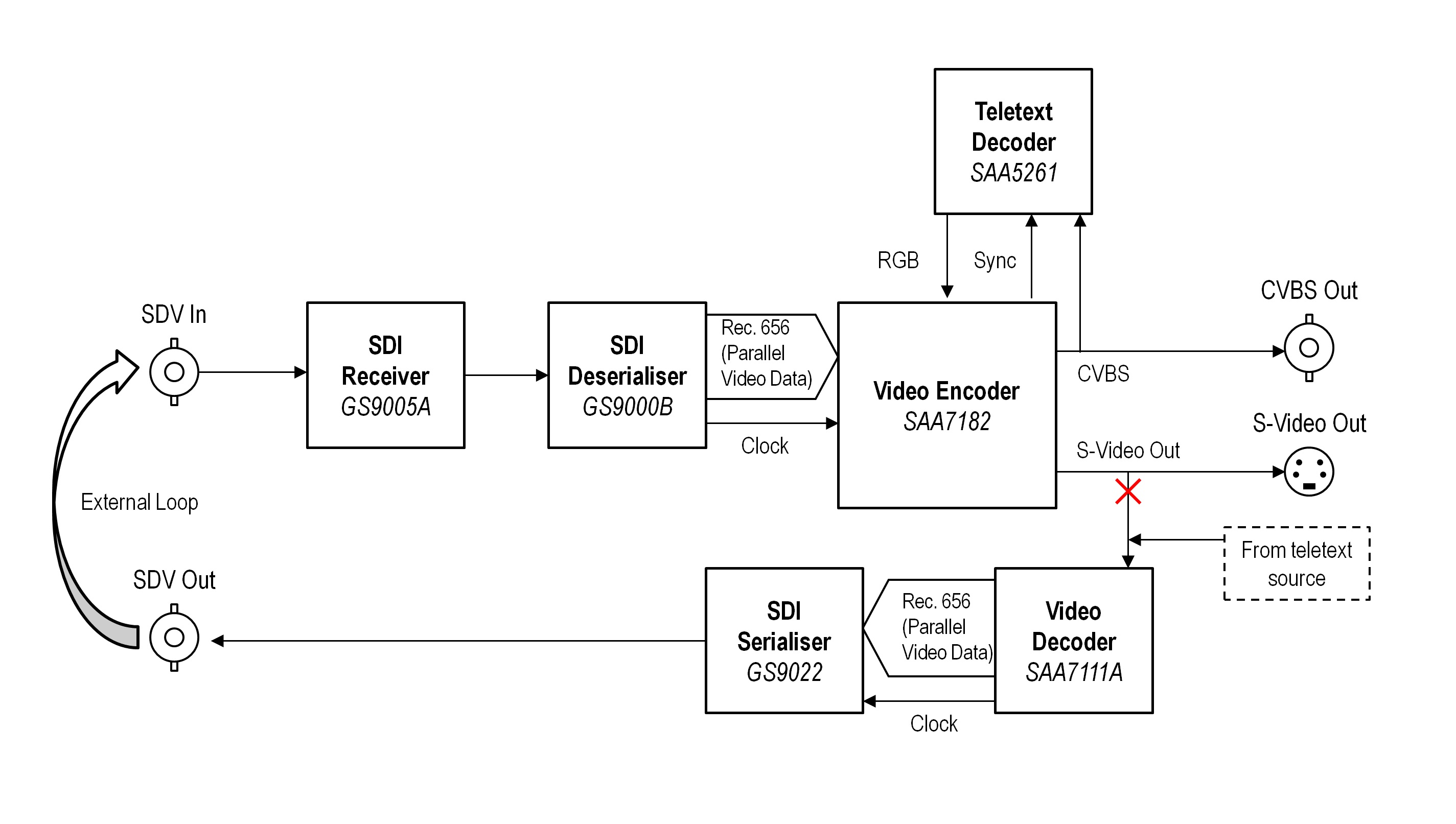
As you can see, the beauty of this hack is not only how little actually needs modified, but how reversible it is - if I want, I can add a switch to swap the unit between 'normal' operation and 'CVBS In'.
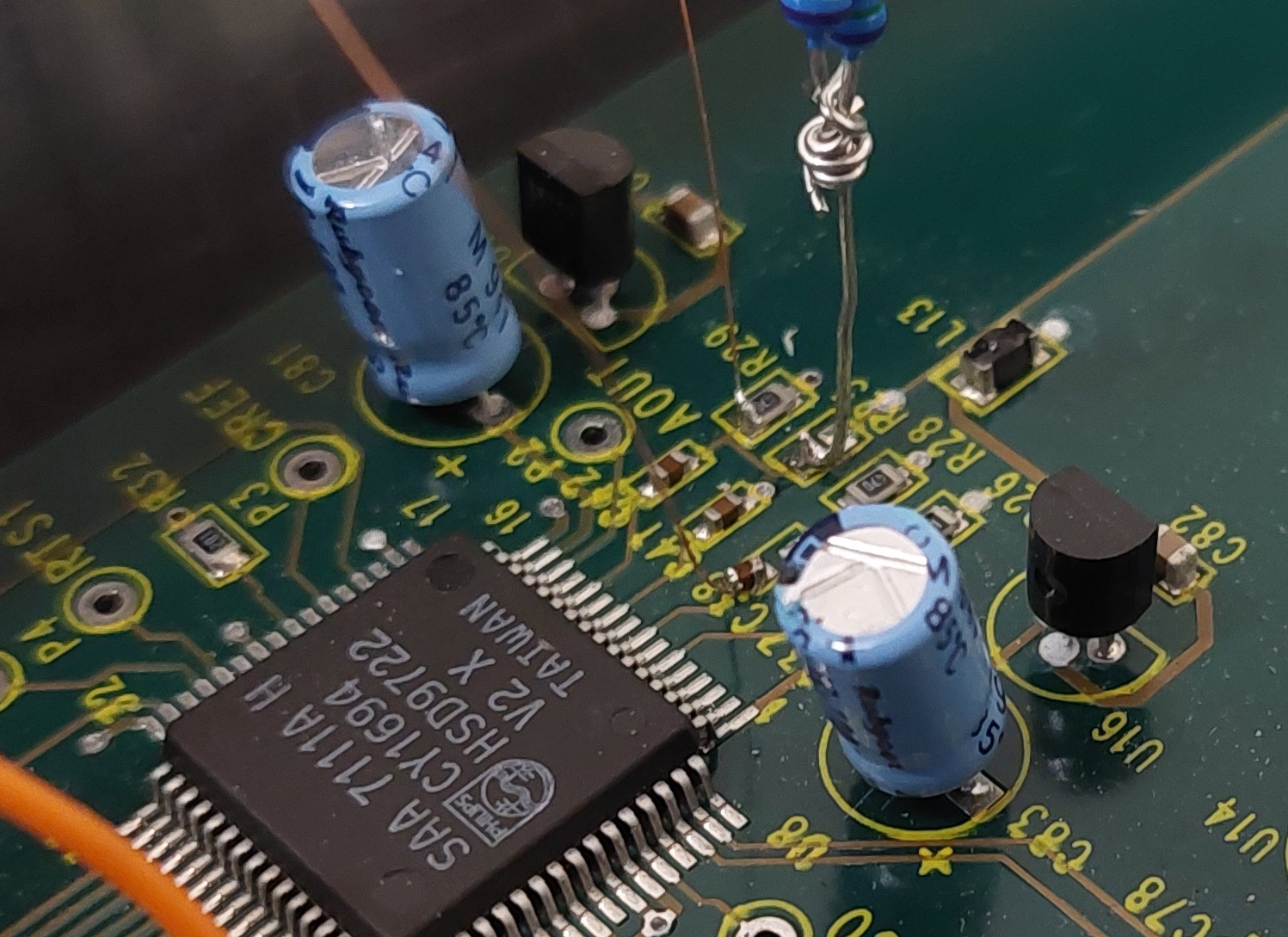
This is all that actually needs to be changed. I've inserted my video signal into the board via a 27 ohm resistor [8] It's actually 3x 75 ohm resistors in parallel because that's what I had, which actually measures 25 ohms, but close enough for this experiment - it's only temporary! . I've also looped it across to the Chroma input, since it turns out this is actually supposed to be an S-Video signal. Not ideal but it works fine, as you can see:
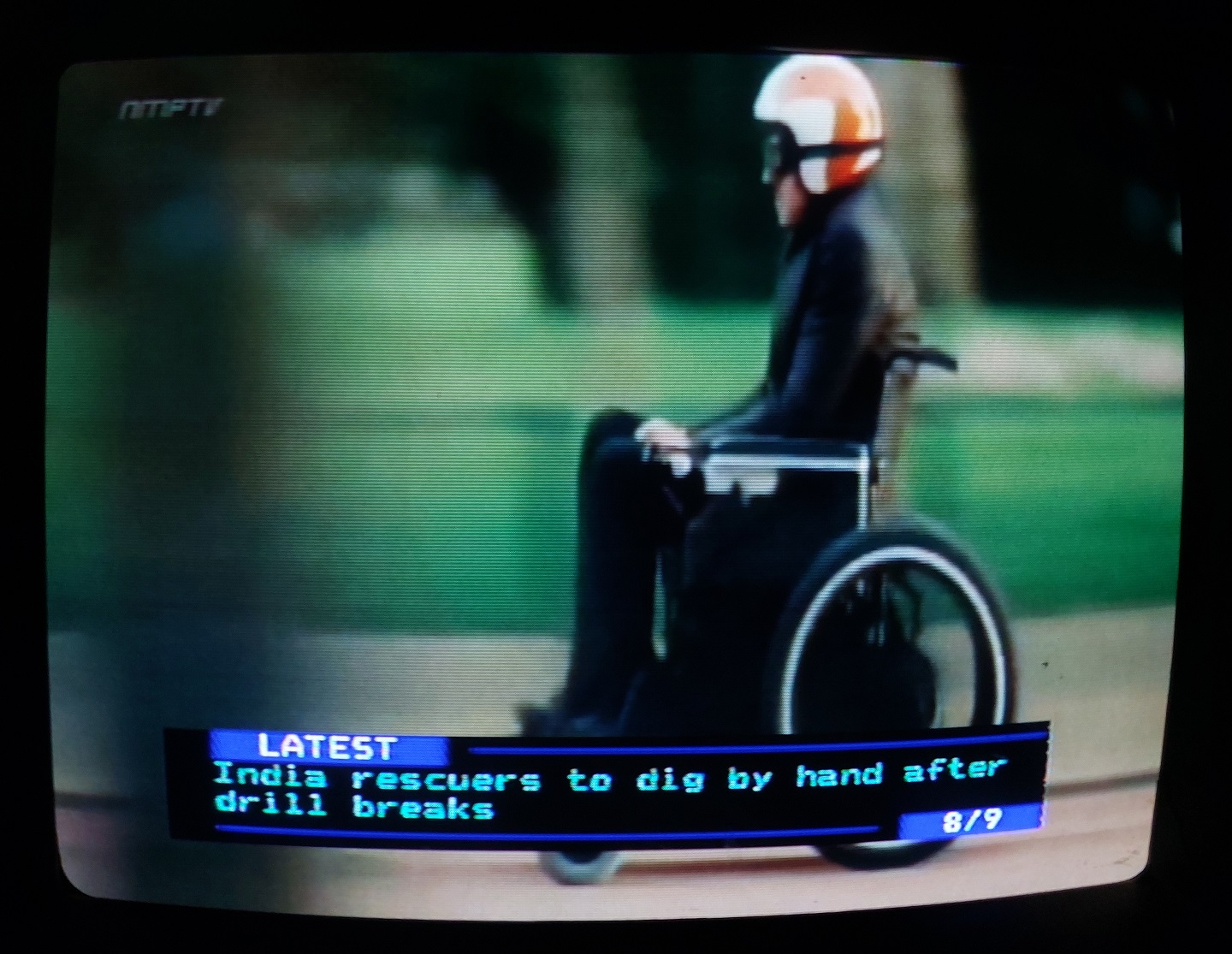
So what's next? Well obviously I want to do this properly - so I'm going to add a 4 pole toggle switch and a BNC socket on the rear so that one can switch between SDI or CVBS input, as described above. Also, you might have noticed there's a socket on the back for a 'keypad' - so I'd like to try and build something to suit that. But that's for another day. In the meantime I have two more of these decoders to modify!
- Nathan Dane, Nov 2023
Postscript notes:
- You can actually see three very similar units in this wonderful Google Streetview of BBC Television Centre's Central Communications Area - although those are DTP910s which are slightly different.
- These decoders were very kindly given to me by Carl Attril, after he rescued them from a Facebook listing
- P888 is the standard page for teletext subtitles.
- I couldn't be bothered to find the actual crate but here's a single card for it at £100
- Fortunately I know Peter Kwan, who worked for MRG Systems - he's passed me on the manuals for this and several other things they made.
- This is a problem with my decoder - it takes it's input from my internal "TV Chain" - so if you try to send it's output to the same chain, everything goes haywire as it continuously tries to re-sync to itself!
- In Rec. 656 digital video, a row of zeros makes a deep green - so you get a green screen with no input instead of the expected black
- It's actually 3x 75 ohm resistors in parallel because that's what I had, which actually measures 25 ohms, but close enough for this experiment - it's only temporary!
